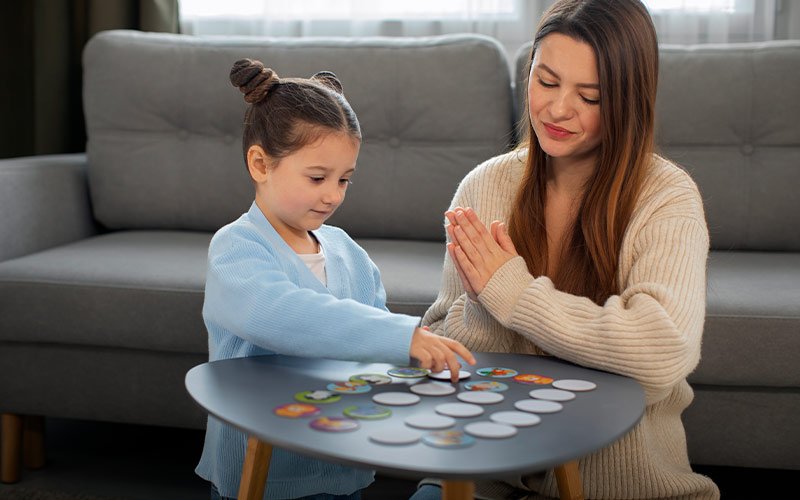When a child struggles to express themselves clearly or an adult faces communication challenges after an illness or injury, it can feel overwhelming. Families may wonder what steps to take, where to seek help, and whether improvement is truly possible. Speech therapy offers hope and measurable progress by addressing these concerns with personalized support rooted in science and compassion.
Speech therapy is not just about correcting pronunciation or expanding vocabulary—it’s a comprehensive therapeutic approach tailored to each individual’s needs. Whether the goal is to help a nonverbal child speak their first words or support someone recovering their speech after a stroke, this therapy can significantly enhance communication, confidence, and overall quality of life.
What Is Speech Therapy?
A specialist professional treatment, speech therapy is intended to assess and treat issues related to speech, language, communication, and swallowing. Licensed speech-language pathologists (SLPs) with extensive training and qualifications usually offer services. These professionals work with individuals across all ages—from toddlers experiencing language delays to adults with neurological conditions affecting speech.
The therapy process begins with a thorough assessment. This helps the clinician understand the client’s strengths and challenges in areas like articulation, fluency, voice, and language comprehension. Based on the findings, a custom intervention plan is created to target specific communication goals.
Why Is Speech Therapy Important?
Strong communication skills are essential for learning, social interaction, emotional development, and independence. When these abilities are compromised, whether due to developmental delays, autism spectrum disorder (ASD), traumatic brain injury, or other conditions, the impact can be significant.
Speech therapy helps bridge these gaps. Research from the National Institute on Deafness and Other Communication Disorders (NIDCD) supports that early intervention in speech-language delays yields the best outcomes, particularly for children under the age of five. But therapy can be effective at any age when tailored to individual needs.
Common Conditions Treated in Speech Therapy

Speech-language pathologists address a wide variety of concerns, including:
- Articulation Disorders: Difficulty pronouncing sounds correctly.
- Fluency Disorders: Stuttering or interruptions in speech flow.
- Receptive Language Disorders: Challenges understanding spoken or written language.
- Expressive Language Disorders: Difficulty using words to express thoughts.
- Voice Disorders: Issues with pitch, volume, or quality of voice.
- Social Communication Disorders: Often seen in children with autism, involving difficulty using language in socially appropriate ways.
- Cognitive-Communication Disorders: Problems related to memory, attention, or problem-solving, typically due to brain injury or illness.
- Swallowing Disorders (Dysphagia): Often treated alongside speech issues when oral motor skills are affected.
How Does Speech Therapy Work?
Speech therapy sessions can look different depending on the client’s age and diagnosis. For children, play-based techniques are often used to build engagement and learning. Adults may focus on regaining lost skills, practicing strategies for daily communication, or improving speech clarity.
Treatment techniques may include:
- Visual aids and gesture systems
- Sound repetition and practice drills
- Vocabulary-building activities
- Storytelling and role-play
- Use of augmentative and alternative communication (AAC) tools
Therapists also coach caregivers to reinforce strategies at home. This collaborative model ensures consistent progress beyond the therapy room.
Speech Therapy for Children with Autism

Children with ASD often face challenges in both verbal and nonverbal communication. Speech therapy services play a vital role in developing their language and social skills. Therapists work closely with families and ABA professionals to integrate language goals into the child’s overall behavior plan.
In many cases, verbal behavior therapy services are incorporated within the speech therapy process. This technique focuses on teaching functional language by analyzing the reasons behind communication—such as requesting, labeling, or expressing feelings—and building skills from there.
Benefits Beyond Communication
While improving speech is a primary goal, the benefits of therapy often extend into other areas of life. Clients commonly experience:
- Increased confidence in social settings
- Better academic performance for school-aged children
- Greater independence in daily tasks
- Improved relationships with family and peers
For adults, therapy can help restore identity and autonomy after events like a stroke or traumatic brain injury. It becomes a key part of the recovery journey, empowering clients to re-engage with the world around them.
Combining Speech Therapy With ABA Services
For children with developmental or behavioral challenges, combining speech therapy services with ABA therapy services provides a well-rounded treatment approach. ABA (Applied Behavior Analysis) focuses on behavior and learning strategies, while speech therapy enhances communication—together, they support meaningful, functional outcomes.
Therapists from both disciplines often collaborate to set aligned goals, ensuring progress in one area reinforces the other. For example, a child working on reducing problem behaviors in ABA may simultaneously build the communication tools needed to express frustration appropriately during speech sessions.
What to Expect in Your First Appointment

The first session typically includes a comprehensive evaluation to identify communication challenges and define therapy goals. Family members are encouraged to share insights and concerns, which helps the clinician design a relevant, realistic treatment plan.
Once the plan is in place, regular sessions—ranging from once a week to several times depending on the client’s needs—are scheduled. Progress is monitored closely and adjustments are made as necessary. Success is measured not only by speech improvements but also by the client’s ability to function effectively in their environment.
Finding the Right Speech Therapy Support
When selecting a provider, it’s essential to look for licensed professionals with experience relevant to the client’s age and condition. Ask about their approach, experience with co-occurring therapies like ABA, and how they involve caregivers in the process.
Families are encouraged to explore local speech therapy services that prioritize collaborative care, personalized treatment, and compassionate support. The right therapeutic relationship makes a profound difference in achieving long-term communication success.
Ready to Begin?
Speech therapy opens doors—for expression, connection, and confidence. Whether supporting a toddler learning first words or helping an adult recover communication skills, the journey begins with one step.
For questions or to schedule an evaluation, feel free to contact our clinic. Our team is here to help you or your loved one every step of the way.
